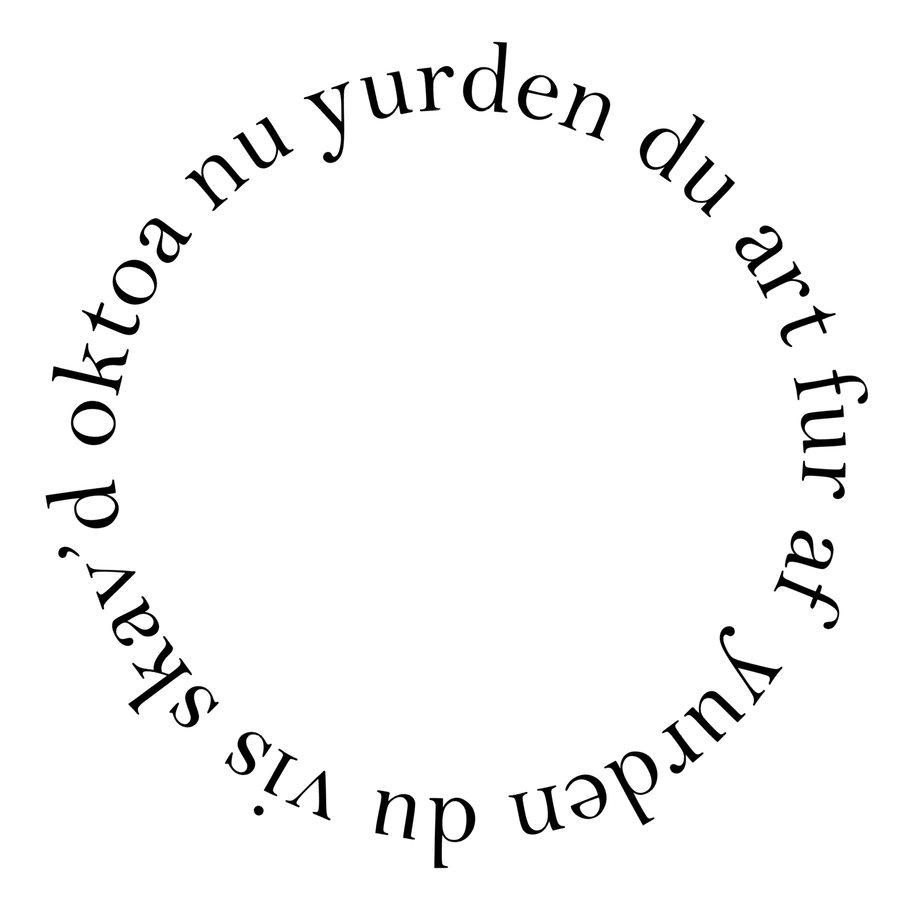Documenting Britain
My Documenting Britain project will document my time spent between two very different locales, engaging with the people, culture and history of these places. I will also be incorporating elements from my own PhD research in this endeavour. This project will primarily feature poetry, though may also include filmmaking from time-to-time – particularly in the field of film portraiture.
Yurden - A Circle Poem
Recently, my project has brought me to think a lot about loss – or, at least, absence. I came across an old burial formula in a book about Shetland folklore, which at the time seemed to be a fragmentary survival of Norn, Shetland’s ancient language. According to the author it is from the island of Yell, and dates back to the 14th or 15th century:
Yurden du art fur af yurden du vis skav’d
Oktoa yurden nu ven dœd.
Op fra yurden skal du Opstaa,
naar Herren aar syne bastnan blaa.
Earth thou art, for of earth thou wast made
To earth thou returns now when dead.
From the earth thou shalt arise
When the Lord shall blow the last trumpet.
Relics of the old Norn language fascinate me, though I am slightly hestitant to admit it. In the past there have been those who would romanticise Norn as the lost ‘Midder Tongue’, and who’d view the current dialect as its corrupted inferior. To lament the loss of Norn on these terms seems, to me, entirely self-defeating. There is nothing we can do to change the course of history in this: Norn is nothing more than a memory (if it is even that), the echoes of which can be heard in a substratum of dialect words. This is not to say I think the study of Norn invaluable at all (trust me, I would love it if somewhere in Shetland there was a complete dictionary of Norn words and grammar waiting to be unearthed); I am just much more fascinated by the implications of Norn’s absence – and it is strangely striking just how absent it is.
A brief history lesson: Shetland has virtually no recorded literary works from before the ninteenth century. This is down, in part, to the death of the language in which these works would have existed: Norn. Norn ceased to exist as a living language by the end of the eighteenth century; this, paired with low literacy rates, meant that much of the oral tradition could not be understood, passed on or recorded for the sake of posterity. We know very little about the songs, poems and stories of ancient Shetland, though the handful of fragments that have survived certainly hint at a rich and vibrant oral tradition. I have written elsewhere about The Unst Lay, which is one of my favourite poems from home, mainly for its intriguing conglomeration of Odinic and Christian theology:
Nine days he hang pa da rötless tree,
For ill was da fök an göd was he;
A blöddy mett was in his side,wi a lance at widna hide;
Nine lang nichts i da nippin rime
Hang he dere wi his naked limb,
Some dey leuch
Bit idders grett.
The Unst Lay was recorded in 1865 by a Peter Sinclair. In a letter, he said of it: “The woman who repeated the rune rime to me was called Russlin. Her house was in, or near, the village of Norwick, Unst; and as nearly as I can remember, the conversation took place in the summer of 1865. I was not very old at the time, and I regret very much that I did not make some attempt, however runic, to take notes.’ He adds, ‘Few now will take any interest in this sort of lore; and these old wives fables will soon be interred with their bones’.
It crops up time and time again when I search for Norn-related articles – this regret, that the memories and stories were not recorded sooner. It is because of this loss that Shetland’s literature is still so young – only two hundred years old. I would also wager that it is perhaps partly because our literary heritage begins in loss, this may be why we agonise over the survival of our dialect so much. We are tired of rootless trees, of cultural memory being interred with the bones of our past. I suppose in many ways this captures the main concern of my project.
To return to where I started this: the burial formula. I recently found out that the burial formula is not, in fact, an example of Norn. Further research has led me to believe it’s actually a bastardised version of Danish, brought to Shetland during its historic period of merging linguistic jetstreams. I find this strangely apt; by its very nature, it becomes a language of crossroads, which seems fitting given its content.
I decided to create it into a ‘found poem’ of sorts, which was a first for me (the circle formation was very much inspired by the work Iain Hamilton Finlay). I have provided translations into Shetland dialect and English, which I hope represents in some ways the genesis of Shetland’s linguistic history. George Mackay Brown once spoke of how these lines from The Merchant of Venice should have been carved over the lintel of his door: “In sooth, I know not why I am so sad/It wearies me…”, for they seemed to express perfectly his life and way of looking at things. I suppose you could say I have found my own lintel-carving in this ancient prayer; though if I had the means, these words would not appear above my doorway. In another nod to Ian Hamilton Finlay, I think I would have them in my garden, carved on a stone sundial.

Yurden du art
fur af yurden du vis skav’d
oktoa nu yurden
*
Aert du is
fir o aert du wis made
return noo tae aert
*
Earth you are
for of earth you were made
return now to earth